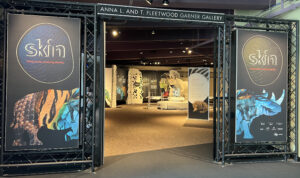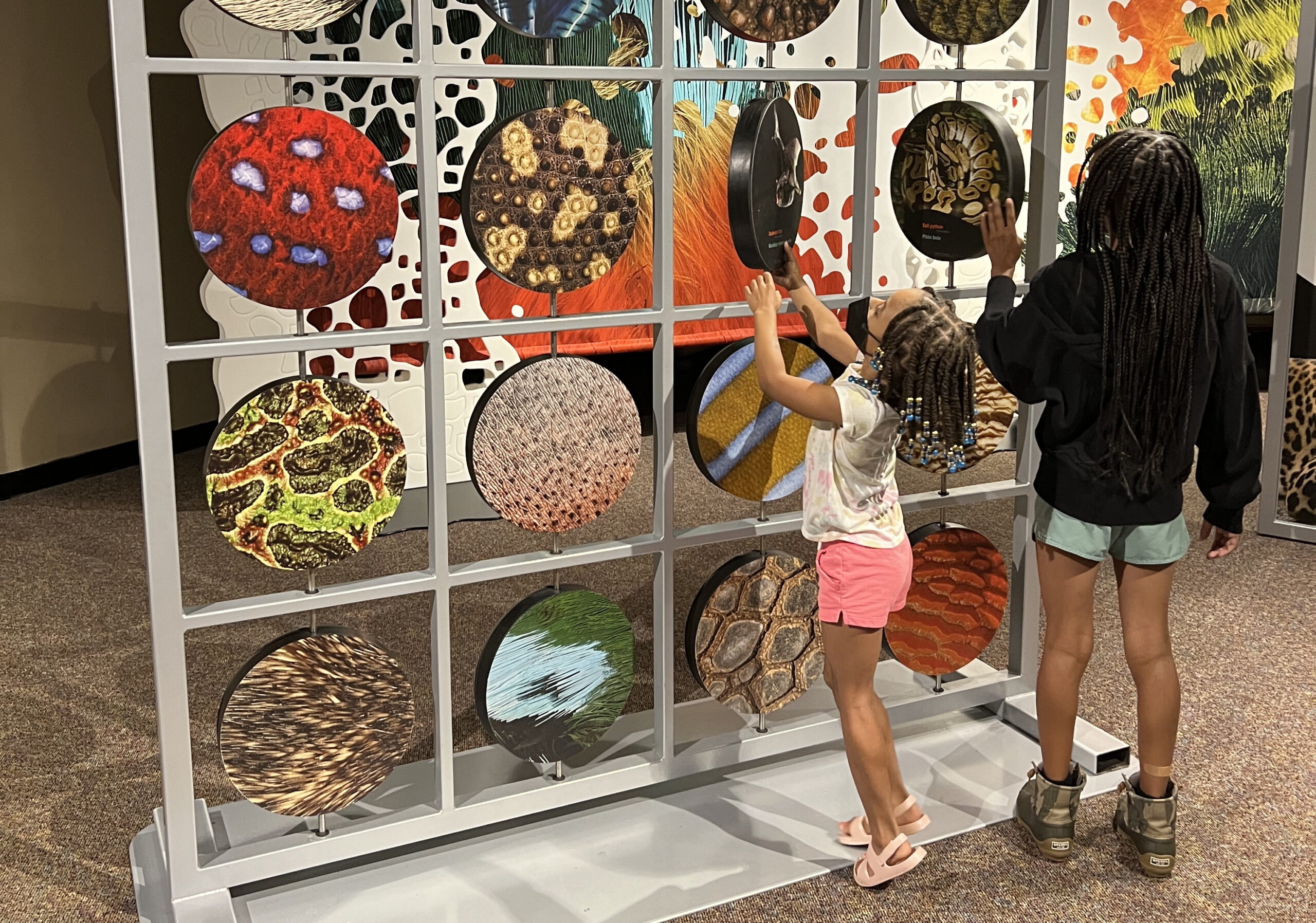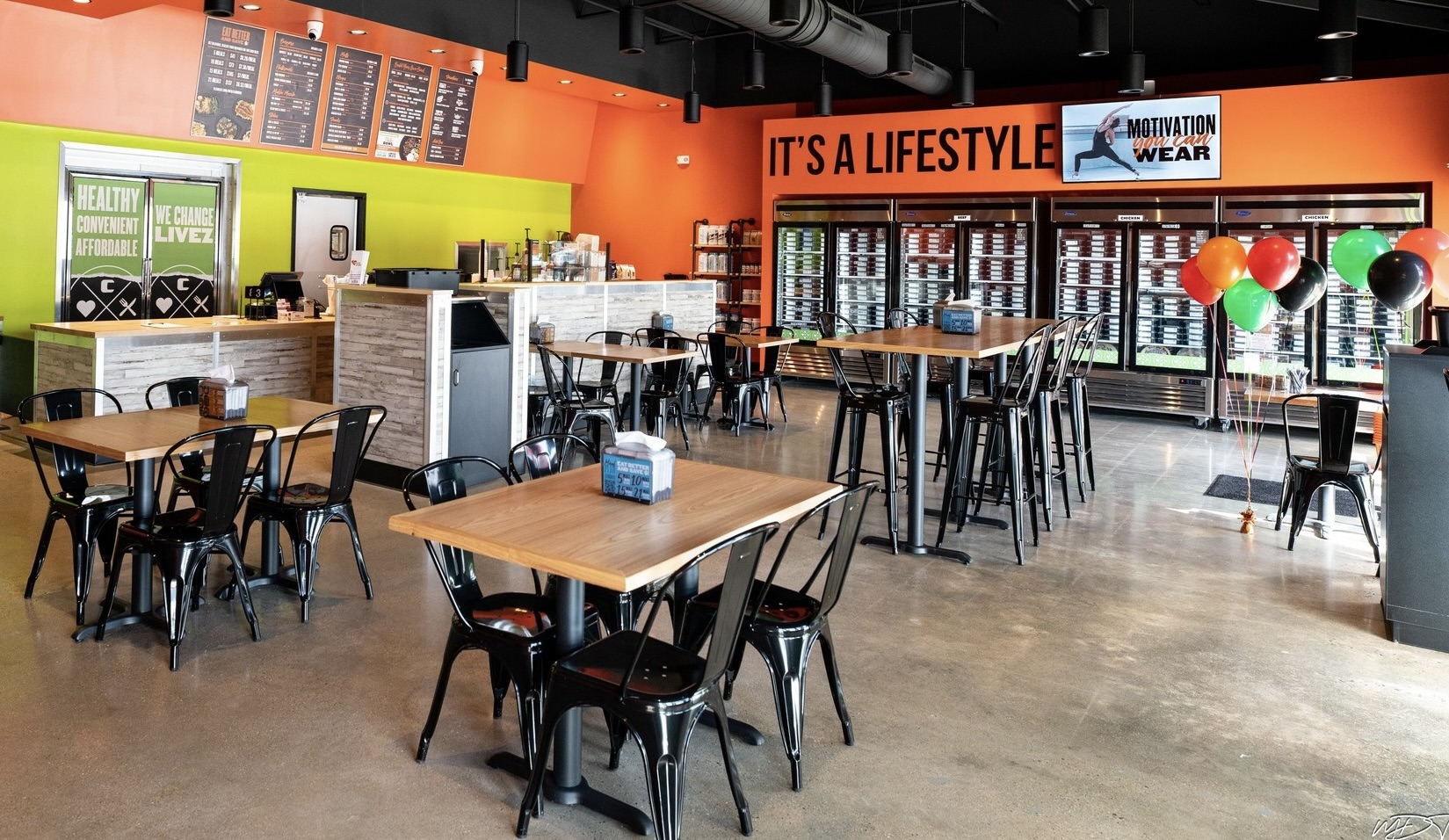“Skin – what is it good for? Absolutely everything!”
On our latest outing to the Science Museum of Virginia, we explored Skin: Living Armor, Evolving Identity. From the moment you enter this exhibit, which is free with your Science Museum admission or membership, until you leave, you are surrounded by opportunities to explore and understand our connection to animals and each other through skin, which is our largest organ.
 Upon entry, you’re greeted with two large colorful signs with a rhinoceros that has different skin patterns and textures. This sets the stage for all of the different animals and people included in the exhibition. After you cross the threshold, you immediately encounter enlarged replicas of different skin, scale, and fur patterns you can touch and explore. This makes way for graphic panels that explain the difference in skin between mammals, fish, amphibians, and birds.
Upon entry, you’re greeted with two large colorful signs with a rhinoceros that has different skin patterns and textures. This sets the stage for all of the different animals and people included in the exhibition. After you cross the threshold, you immediately encounter enlarged replicas of different skin, scale, and fur patterns you can touch and explore. This makes way for graphic panels that explain the difference in skin between mammals, fish, amphibians, and birds.
First this: If at any point in the exhibition you get the heebie-jeebies from all of the different tactile experiences, I’m right there with you.
The next section of the exhibition investigates skin and how it protects, heals, and renews itself. You’ll see everything from how the skin of our feet is thicker for protection to how animal and human skin regenerate.
Our skin, in concert with thousands of nerves and our brain, create one of our greatest senses, our sense of touch. There are two fantastic interactive activities in this area that introduce and illustrate through touch how heat, vibration, and pressure are experienced through your hands.
This human experience was amazing, but some of the most interesting facts we discovered were around animals’ use of skin and whiskers to communicate and sense danger. Did you know that the sole of an elephant’s foot can sense tremors created by an elephant herd traveling up to twenty miles away or that beads of skin on a crocodile’s jaw can sense droplet-sized disturbances in water?
Closing out this section, guests transition to the idea of melanin, the naturally occurring protective pigment that gives humans and animals our beautiful hues and protects us from the ultraviolet rays of the sun. It also happens to be the main criteria humans have used to exploit and harm individuals and communities. In reality, the human-created social construct of race, which is based on what we see on the surface, is scientifically meaningless, yet is remains a pervasive social reality.
This final section of the exhibition is called Color and Culture, and it does a wonderful job at exploring the history of race. There is a multi-sided kiosk that is chronological, starting with the 1600s and continuing through the 21st century. Here, you’ll ponder questions like, Who defines race? and examine how race has been used to exclude whole groups of people from obtaining equal levels of health, wealth, and prosperity.
Closing the exhibition this way leaves an impact, one that I would like to believe challenges us about our understanding of skin as a science, race as a concept, and the impacts they have had and continue to have on people and communities, both locally and across the world.
This was a beautifully designed exhibition for kids and families meant to “inspire wonder and curiosity about this uniquely complex organ, illustrate the incredibly adaptive properties of skin across all organisms, and spark dialogue and reflection about skin’s role in shaping human culture and identity.” It achieves this and much more.
Skin: Living Armor, Evolving Identity at the Science Museum of Virginia is open through January 15, 2023. For tickets and details, go here.







